Flames pizza and burgers have been one of the top visiting and trusted local pizza and burger outlets in Auckland, New Zealand (“Flame Pizza Reviews”). The major reason why flame is preferred by customers is the quality of the ingredients we use as we promote Organic ingredients and believe in serving natural and authentic taste to our customer’s taste buds.
According to (Ministry of Health New Zealand).In recent years we have seen Multiple big-time MultiNational brands spreading their chemical infused frozen foods to people which has increased the number of obesity in New Zealand.
One of the biggest players to bring this hell of obesity to New Zealand is the clown
( Mcdonalds ) with their aggressive marketing techniques and cheaper prices, they lured kiwis in their spell by feeding them with chemical infused burgers and fries (Benshosan).
Here is some information on the top 6 toxic ingredients used by Mcdonalds in their burgers and fries (Young):
1. Acrylamide:
Scientists have known for years that acrylamide is capable of causing nerve damage in humans, including muscle weakness and impaired muscle coordination, particularly from industrial exposure to large levels of the chemical. Acrylamide, a widely-used synthetic chemical that some studies have linked to cancer and neurological damage, has recently been shown to occur naturally in an increasing number of foods ranging from French fries to coffee. (“American Chemical Society”)
2. Azodicarbonamide:
In foods, it is used as a bleaching agent; it makes the bread whiter by reacting with the cartonene that occurs naturally in the flour. It also improves flour strength, which improves the dough’s ability to retain gas and makes the bread more elastic. It is also used in baked goods, rice, chewing gum, flour, and grains. According to the Huffington Post, Subway, McDonald’s, Burger King, Kentucky Fried Chicken, Starbucks, Arby’s, and Dunkin’ Donuts, and others use the substance as an ingredient. (“Azodicarbonamide in Bread at Subway, McDonald’s, etc.”)
3. Sodium acid pyrophosphate:
One study found that sodium phosphate, when used as a food additive, can impact health differently than naturally occurring phosphate. This is because it’s absorbed differently by the body. According to the abstract, high levels of phosphate may elevate mortality rates for the general public, as well as for those with kidney disease and cardiovascular disease. Researchers linked high phosphate levels to accelerated aging and vascular damage. The researchers recommended that people eat foods with naturally occurring phosphates, rather than those with added sodium phosphate. (Whelan and Butler)
4. Dimethylpolysiloxane:
Dimethylpolysiloxane, also known as polydimethylsiloxane (PDMS), is a form of silicone used as an antifoaming agent in food with the European food additive number E900. This ingredient is commonly used in frying oil due to its good deforming effectiveness at high temperatures. (“Antifoaming Agent”)
From the official website of Mcdonalds’ Gulf region, we can know, dimethylpolysiloxane is a food-grade additive acts as an anti-foaming agent to protect their crew from excessive foaming, splashing, or bubbling, which occurs when food is added to very hot oil.
5. THBQ:
TBHQ, like many food additives, is used to extend shelf life and prevent rancidity. It’s a light-colored crystalline product with a slight odor. Because it’s an antioxidant, TBHQ protects foods with iron from discoloration, which food manufacturers find beneficial. (Marengo)
It’s often used with other additives like propyl gallate, butylated hydroxyanisole (BHA), and butylated hydroxytoluene (BHT). BHA and TBHQ are usually discussed together, as the chemicals are closely related: TBHQ forms when the body metabolizes BHA. (Marengo)
A 1999 evaluation by the World Health Organization found the “average” intake of TBHQ in the United States to be around 0.62 mg/kg of body weight. That’s about 90 percent of the acceptable daily intake. Consumption of TBHQ was at 1.2 mg/kg of body weight in those who eat high-fat diets. That results in 180 percent of the acceptable daily intake.
6. Sodium Aluminium Phosphate:
The United States Food and Drug Administration (FDA) recognizes sodium aluminum phosphate as a GRAS ingredient that does not pose health risks unless consumed in significant quantities. It would be unlikely for someone to consume sodium aluminum phosphate in the amounts needed to cause harm. (Anderson and Li)
Some studies suggest that excessive aluminum exposure, especially exposure that can occur in occupational settings like aluminum production, may cause adverse reproductive and neurological health impacts (1,2). As we know, hazard does not equal risk, and it’s unlikely we’d be exposed to harmful levels of aluminum in the ingredients we use in our everyday life. (Anderson and Li)
In short consumption of these toxic ingredients can lead to an increased risk of obesity and chronic diseases like cardiovascular disease, type 2 diabetes, non-alcoholic fatty liver disease, and some cancers.
Bibliography
“American Chemical Society.” Science Daily, American Chemical Society, 22 08 2007, https://www.sciencedaily.com/releases/2007/08/070821090455.htm#:~:text=Scientists%20have%20known%20for%20years,large%20levels%20of%20the%20chemical.
Anderson, Elisabeth, and Jinpeng Li. “Digging Deeper – Sodium Aluminum Phosphate.” Michigan State University – Center for Research on Ingredient Safety, Michigan State University, 21 09 2020, https://www.canr.msu.edu/news/digging-deeper-sodium-aluminum-phosphate.
“Azodicarbonamide in Bread at Subway, McDonald’s, etc.” EHSO, CPSI ( Centre for Science in Public Interest), 10 02 2014, http://www.ehso.com/Azodicarbonamide_In_Bread.htm#:~:text=Case%20reports%20and%20epidemiological%20studies,systems%20have%20not%20been%20studied.%22.
Benshosan, April. “This Is Why McDonald’s Fries Are So Addictive.” www.eatthis.com, 16 10 2017, https://www.eatthis.com/why-mcdonalds-fries-are-addictive/#:~:text=It%20turns%20out%20that%20their,sodium%20acid%20pyrophosphate%2C%20and%20salt.
“Flame Pizza Reviews.” www.Zomato.com, 2020, https://www.zomato.com/auckland/flame-pizza-flat-bush/reviews.
Marengo, Katherine. “The Potential Dangers of TBHQ.” Health Line, Anna Schaefer, 16 07 2019, https://www.healthline.com/health/food-nutrition/potential-tbhq-dangers#how-much-is-in-food.
Ministry of Health New Zealand. “One in three adult New Zealanders (over 15 years) is classified as obese.” Ministry of Health, Food Industry task for Report 2018, 02 09 2020, https://www.health.govt.nz/our-work/diseases-and-conditions/obesity#:~:text=Obesity%20in%20New%20Zealand,and%20one%20in%20ten%20children.
“What is Dimethylpolysiloxane ?” Food Additives, James Han, 28 12 2018, https://foodadditives.net/antifoaming-agent/dimethylpolysiloxane/.
Whelan, Corey, and Natalie Butler. “Sodium Phosphate.” Health Line, Healthline, 18 09 2018, https://www.healthline.com/health/sodium-phosphate#takeaway.
Young, Carol. “Top 10 Toxic Ingredients Used by McDonald’s.” www.top10grocerysecrets.com/, Organic Consumer Association, 2 07 2015, https://www.organicconsumers.org/news/top-10-toxic-ingredients-used-mcdonalds.


